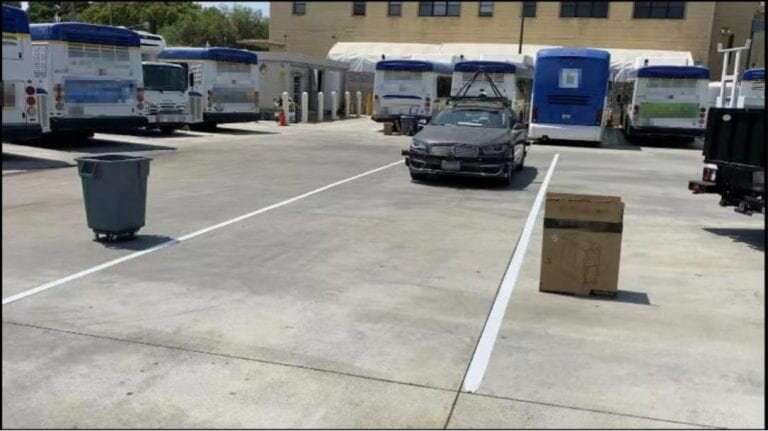Autonomous vehicles can be tricked into dangerous driving behavior

When a driverless car is in movement, just one defective choice by its collision-avoidance procedure can direct to disaster, but researchers at the University of California, Irvine have recognized a different attainable threat: Autonomous motor vehicles can be tricked into an abrupt halt or other undesired driving conduct by the placement of an normal item on the aspect of the highway.
“A box, bicycle or site visitors cone may be all that is essential to scare a driverless motor vehicle into coming to a perilous prevent in the middle of the road or on a freeway off-ramp, creating a hazard for other motorists and pedestrians,” explained Qi Alfred Chen, UCI professor of pc science and co-creator of a paper on the subject introduced just lately at the Community and Distributed System Stability Symposium in San Diego.
Chen added that automobiles won’t be able to distinguish among objects present on the street by pure accident or these left intentionally as part of a actual physical denial-of-services assault. “Both of those can induce erratic driving habits,” mentioned Chen.
Chen and his staff targeted their investigation on stability vulnerabilities specific to the organizing module, a element of the application code that controls autonomous driving programs. This element oversees the vehicle’s determination-earning processes governing when to cruise, change lanes or slow down and prevent, between other functions.
“The vehicle’s arranging module is built with an abundance of warning, logically, for the reason that you really don’t want driverless cars rolling about, out of command,” mentioned guide author Ziwen Wan, UCI Ph.D. pupil in computer system science. “But our screening has identified that the software can err on the side of getting extremely conservative, and this can guide to a vehicle starting to be a site visitors obstruction, or worse.”
https://www.youtube.com/view?v=dCWJTyiE_-s
For this venture, the researchers at UCI’s Donald Bren College of Facts and Computer Sciences designed a screening resource, dubbed PlanFuzz, which can automatically detect vulnerabilities in widely utilised automatic driving systems. As proven in video demonstrations, the team utilized PlanFuzz to examine 3 different behavioral planning implementations of the open up-source, sector-quality autonomous driving programs Apollo and Autoware.
The scientists discovered that cardboard packing containers and bicycles positioned on the side of the street brought on automobiles to forever cease on empty thoroughfares and intersections. In one more exam, autonomously pushed autos, perceiving a nonexistent danger, neglected to improve lanes as planned.
“Autonomous motor vehicles have been concerned in deadly collisions, resulting in terrific fiscal and track record injury for providers this kind of as Uber and Tesla, so we can recognize why brands and assistance companies want to lean toward warning,” reported Chen. “But the overly conservative behaviors exhibited in several autonomous driving programs stand to impact the easy circulation of visitors and the motion of passengers and items, which can also have a destructive influence on enterprises and highway security.”
Joining Chen and Wan on this task had been Junjie Shen, UCI Ph.D. student in pc science Jalen Chuang, UCI undergraduate college student in computer system science Xin Xia, UCLA postdoctoral scholar in civil and environmental engineering Joshua Garcia, UCI assistant professor of informatics and Jiaqi Ma, UCLA affiliate professor of civil and environmental engineering.
B-Gap: A simulation technique for coaching autonomous motor vehicles to navigate complex city scenes
Paper hyperlink: Ziwen Wan et al, Also Scared to Drive: Systematic Discovery of Semantic DoS Vulnerability in Autonomous Driving Planning less than Physical-Earth Attacks, (2022)
Citation:
Autonomous autos can be tricked into dangerous driving actions (2022, May 26)
retrieved 1 June 2022
from https://techxplore.com/news/2022-05-autonomous-vehicles-dangerous-actions.html
This document is subject matter to copyright. Aside from any honest dealing for the function of personal review or exploration, no
portion could be reproduced with no the written permission. The information is provided for information reasons only.
